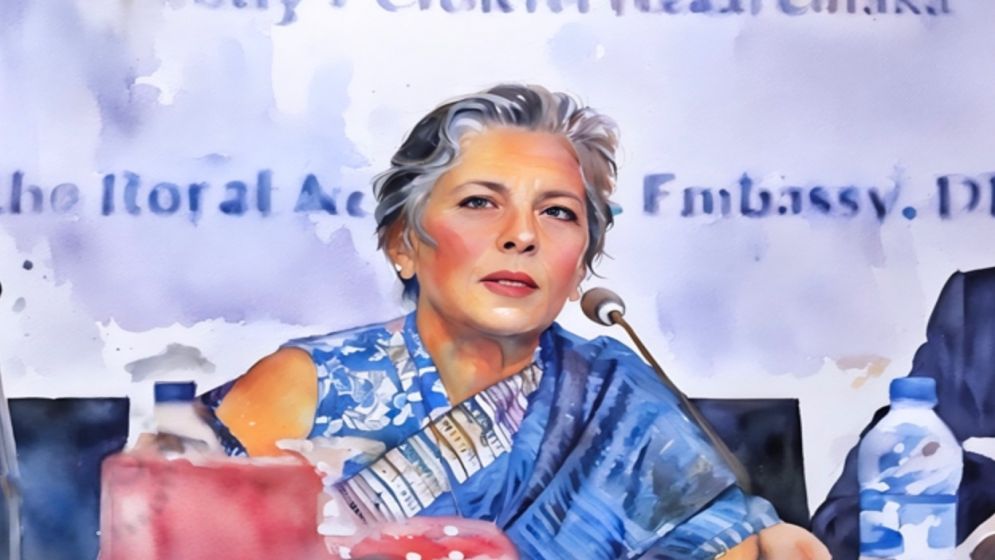Sharmeen Murshid recounts student protest turmoil: "My city has turned into a battlefield”

On Friday, July 19, Sharmeen Murshid, one of the most renowned faces of the country’s civil society, attempted to return home from Dhanmondi but was halted at Jahangir Gate and denied passage through the cantonment.
To her right, Mohakhali was ablaze, and gunshots had caused people to scatter in panic. Despite being an elderly citizen, she was roughly prevented from entering the cantonment. Frustrated, she chose not to identify herself to anyone and decided to walk towards Mohakhali.
Midway through her journey, a helicopter began firing and releasing tear gas. Terrified, she and others pressed against the side wall for safety.
Moments later, a white car sped by, shooting randomly at pedestrians through its windows. She barely caught a glimpse of "Metropolitan Police" on the car before it disappeared.
Shocked and disoriented, she realized that the police were responsible for the gunfire. Had the shots come from the left window, they might have been hit. Bewildered, she stood there in disbelief, thinking, "My city has turned into a battlefield. But who is the enemy?"
A young lad was sitting on the sidewalk, injured by splinters that narrowly missed his eyes, while his friends tried to assist him.
After a brief moment of sympathy, Sharmeen Murshid continued on her way when a middle-aged man stopped her.
He said, "Madame, I recognize you. Please don't go that way. Three young people have been shot dead. Just two minutes ago, a 14-year-old boy was killed by the police, who were kicking him to see if he was still alive."
The man, nearly in tears, questioned, "Who are these people who show no compassion for us? Why are they shooting us?" He implored, "Can the government explain on whose orders these horrific acts by our police were committed? What I witnessed on the streets was beyond description."
On Friday, July 19, a total of 66 people were confirmed dead across the country, as reported by The Daily Star, where Sharmeen Murshid had shared her experience—marking the highest number of fatalities in a single day.
On Thursday, July 18, violence erupted in hotspots such as Notun Bazar, Badda, Rampura, Banasree, and surrounding areas.
Sharmeen, who lived nearby, would regularly venture out to check if children needed help. She observed them confronting armed police and cadres with stones and sticks. That Thursday, exhausted and thirsty, the protesters requested water and saline.
According to the young protesters, five people were killed, including one policeman. When she moved towards Mohakhali, she encountered a policeman who had taken refuge on a rooftop, while hundreds of people, both young and old, surrounded the area to prevent his escape.
An older figure attempted to calm the enraged crowd and pleaded for the policeman’s release, but a young girl responded, "We don’t want any police. They have been killing us. We won’t let him go."
Sharmeen Murshid left the area deeply disturbed, realizing that people now view the police as their adversary.
She reflected that the police, Chhatra League, and the BGB must come to terms with the fact that they are now facing children, younger siblings, and students who are resisting them.
As of now, reports from various sources indicate that over 2,500 people have been arrested, 146 have been killed, and thousands have been injured. Observers suggest that the number of casualties could rise further.
She was appalled by the government's callous disregard for the needs of young people, emphasizing that this disaster could have been averted at numerous stages.
“Government leaders could have stepped down from their high positions and listened to the students. Not a single minister, nor any leader, local or otherwise, engaged with the students,” she said.
“Instead, armed cadres were deployed to the campus, creating chaos right before the eyes of both the public and the government. The university administration passively observed the turmoil without intervening. This inaction was seen as a betrayal, and from that point on, the situation spiraled out of control,” she added.
—-

